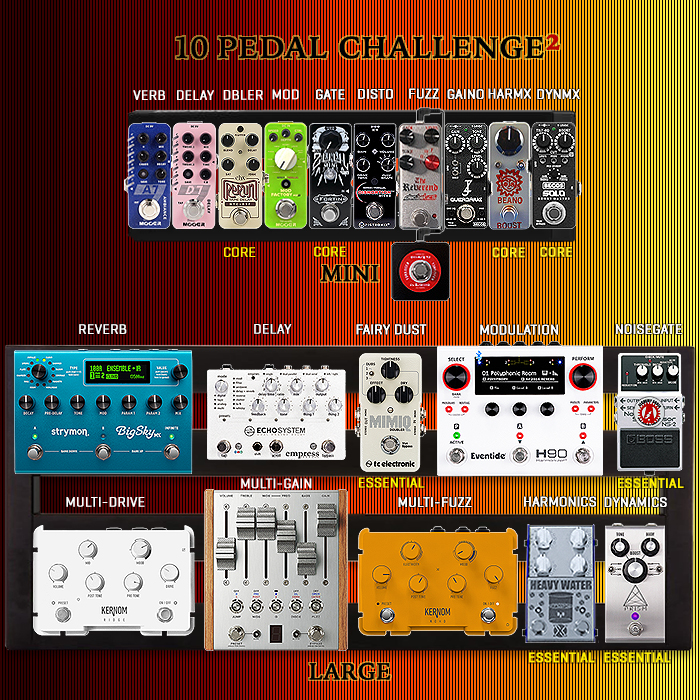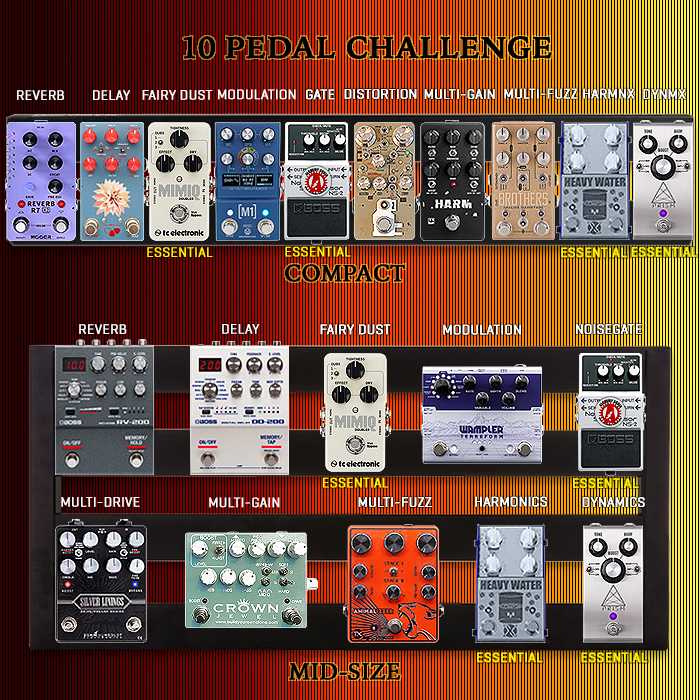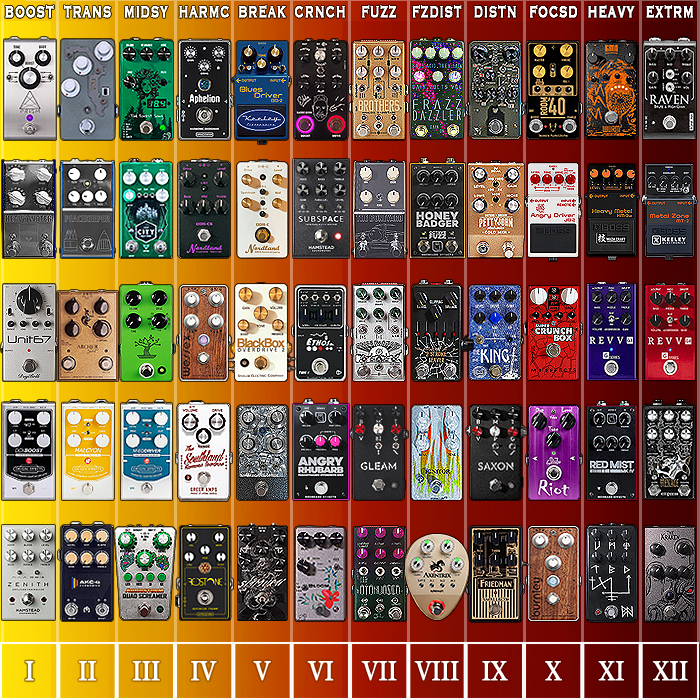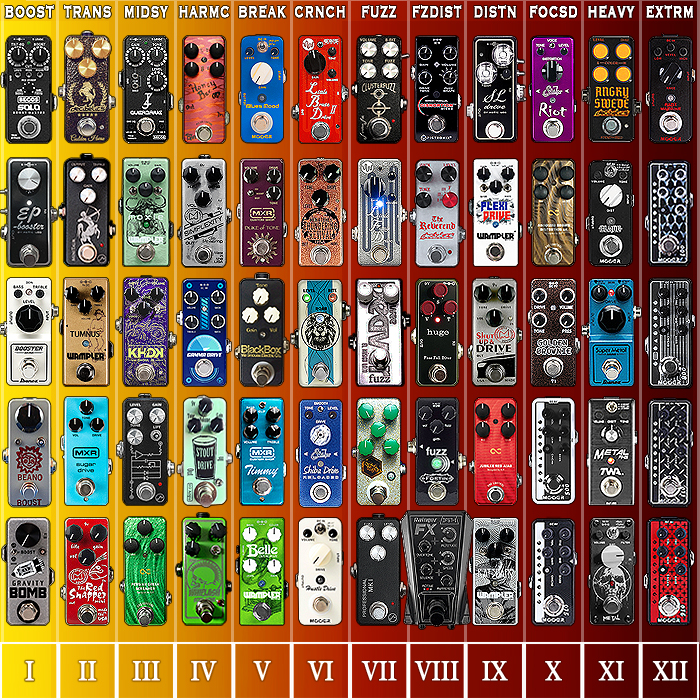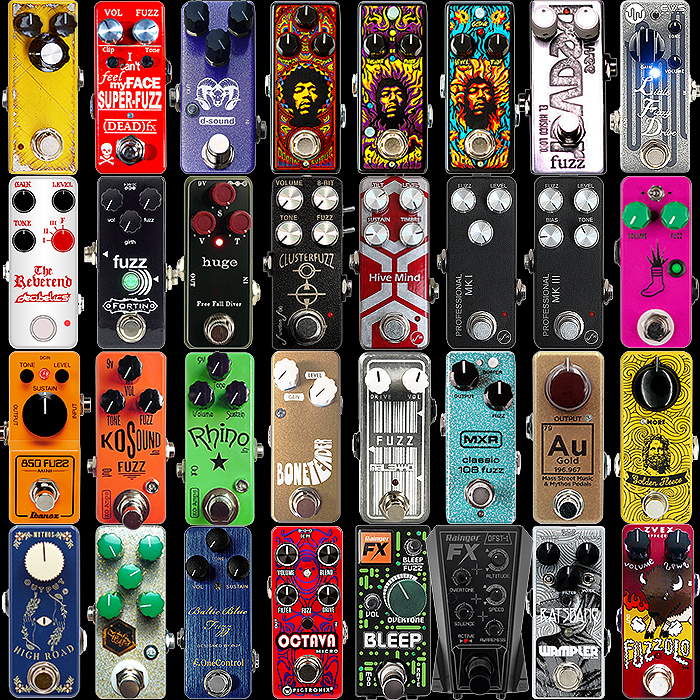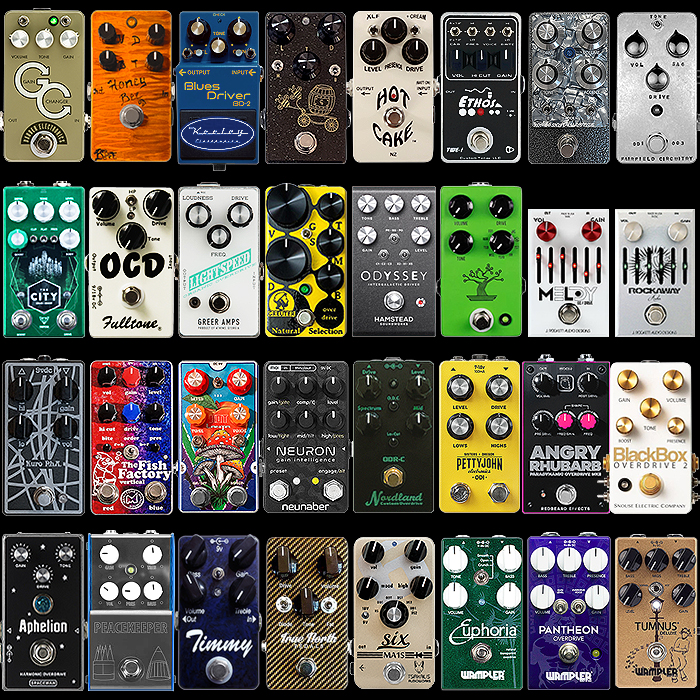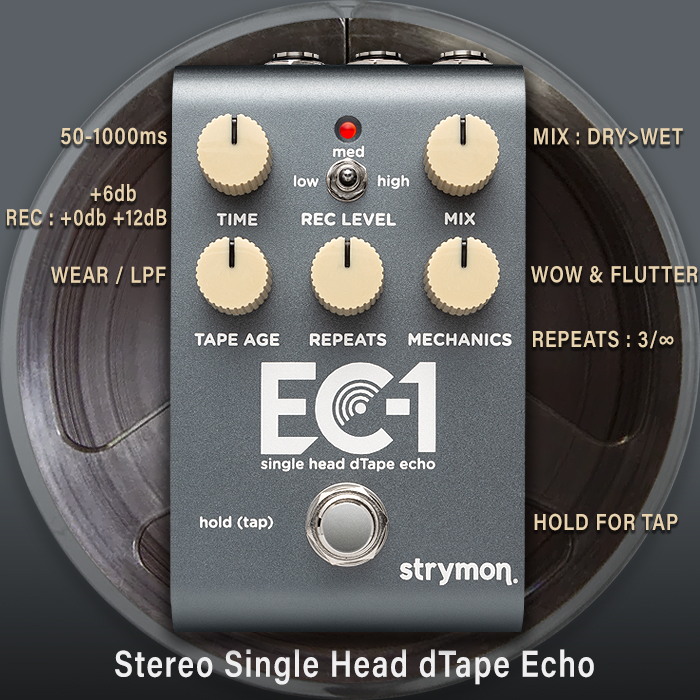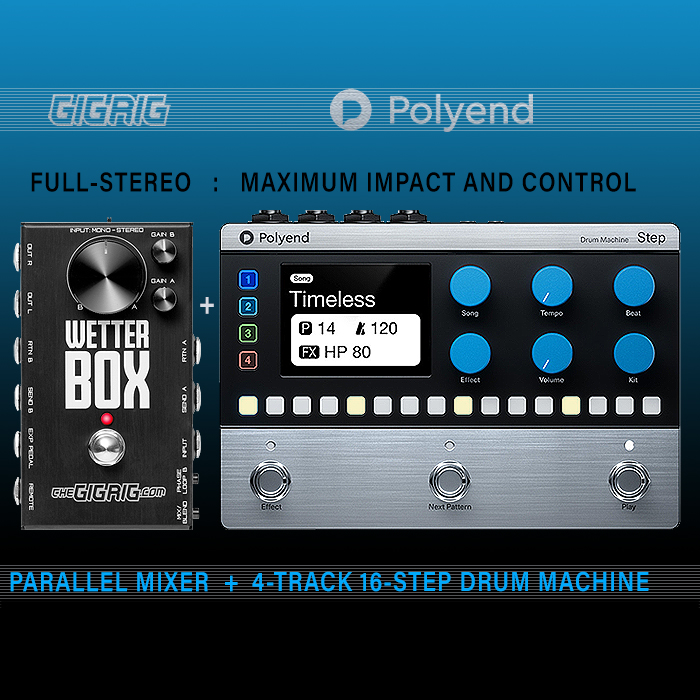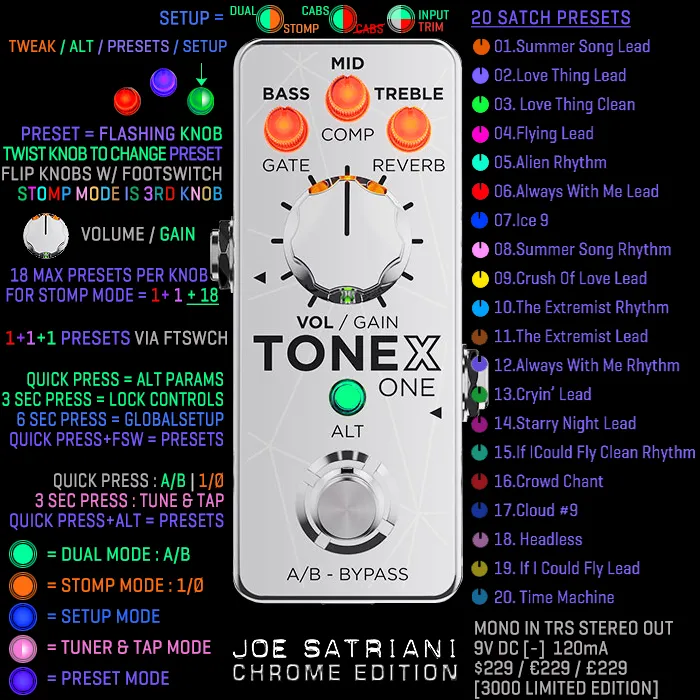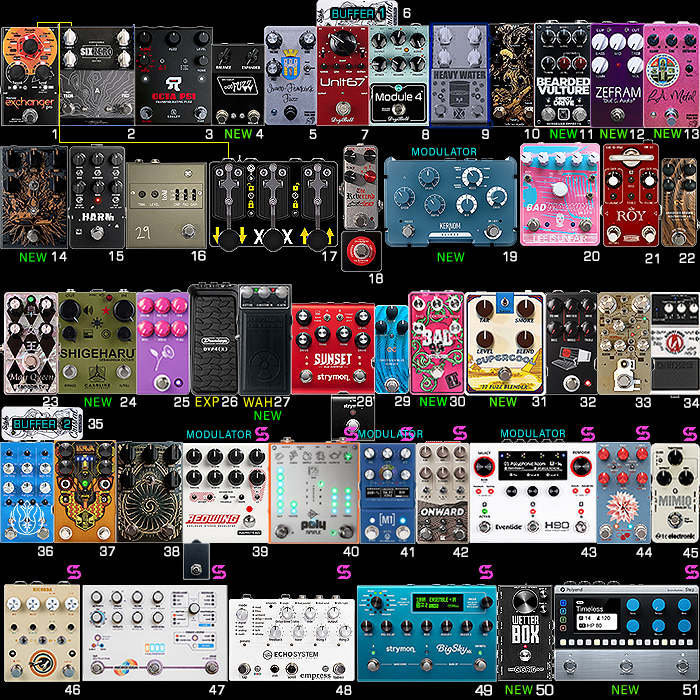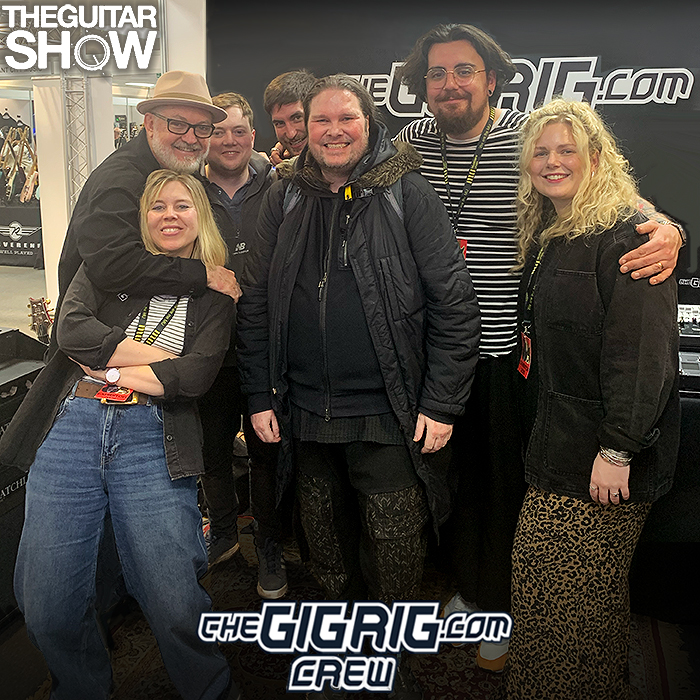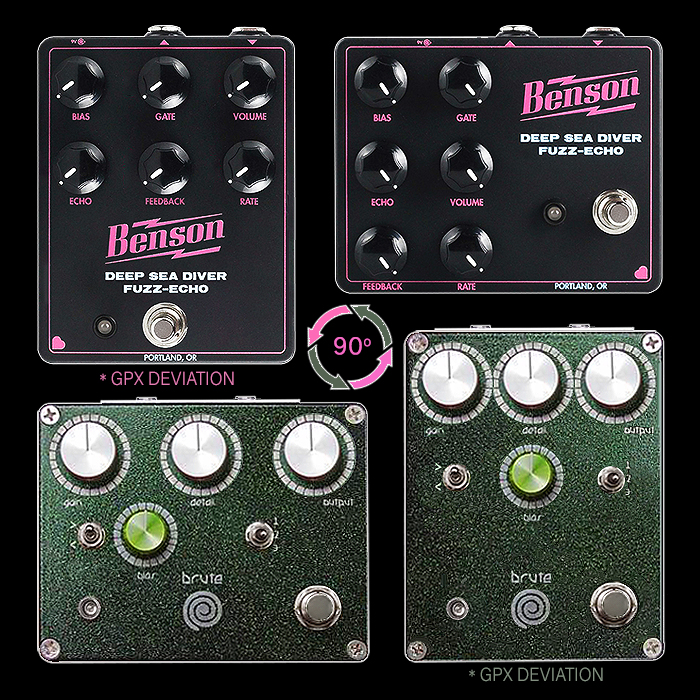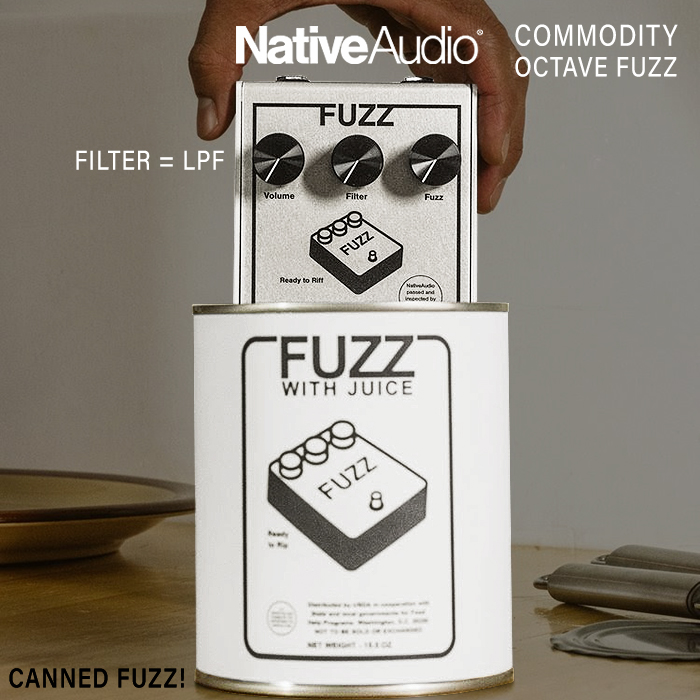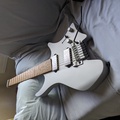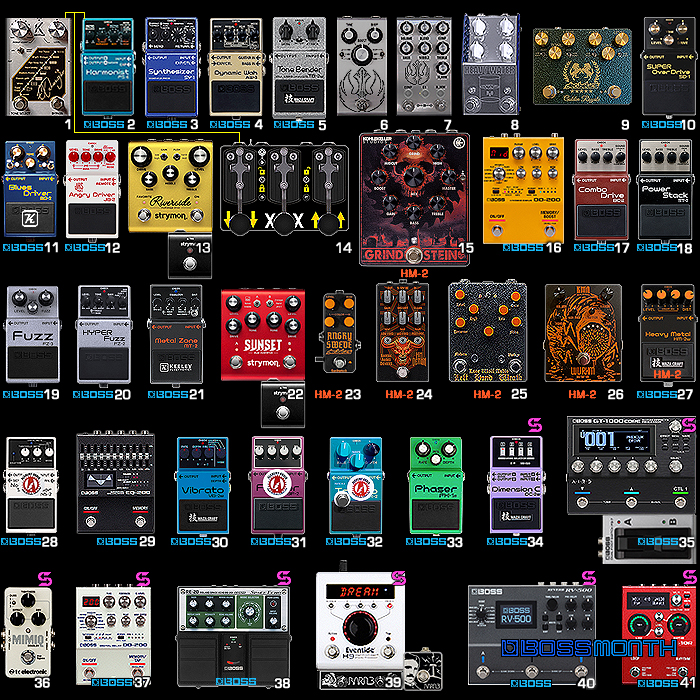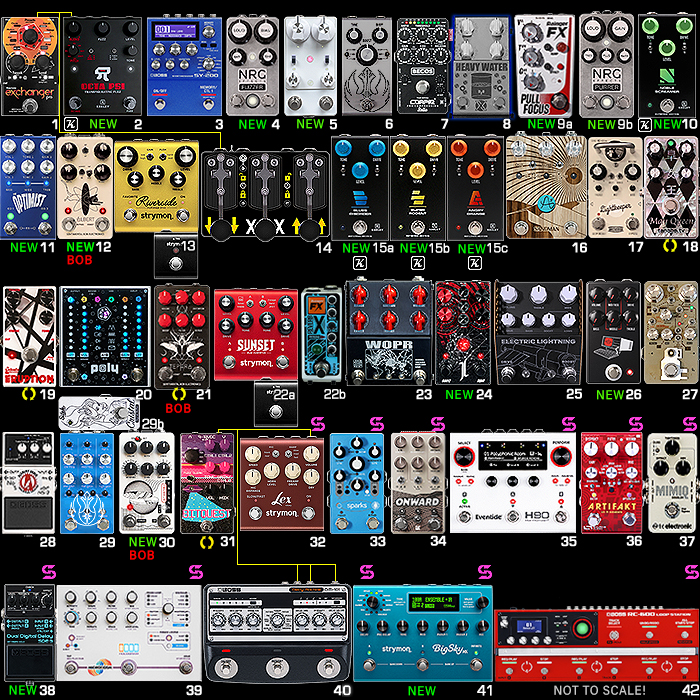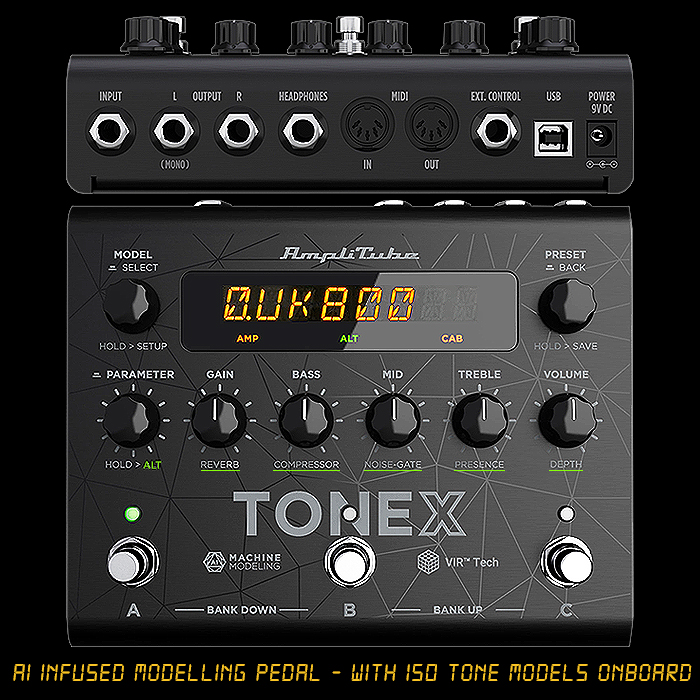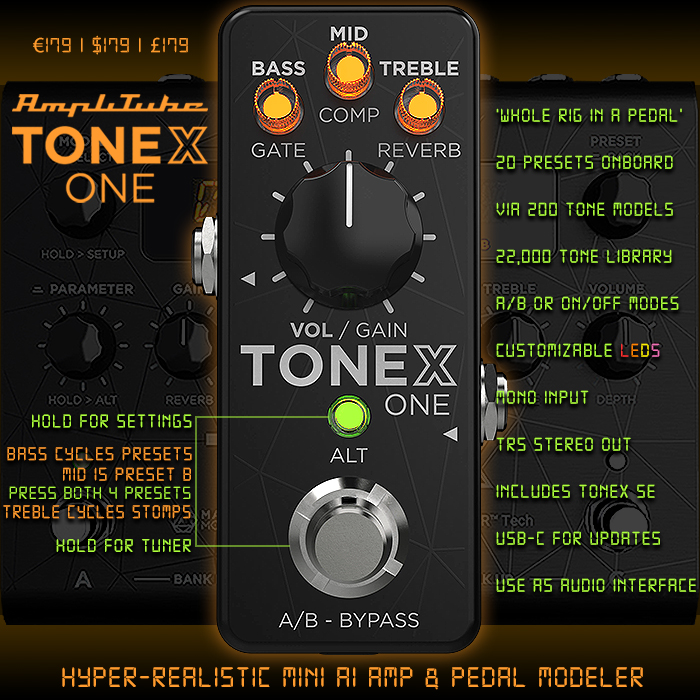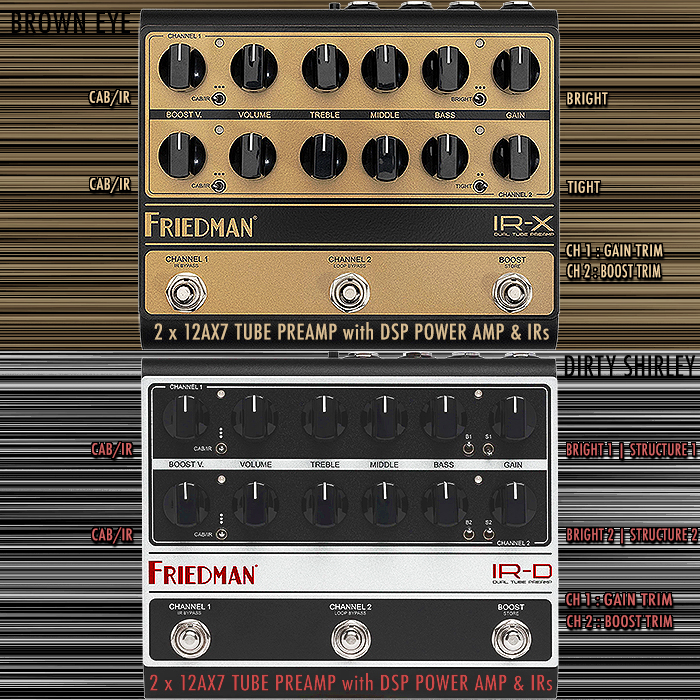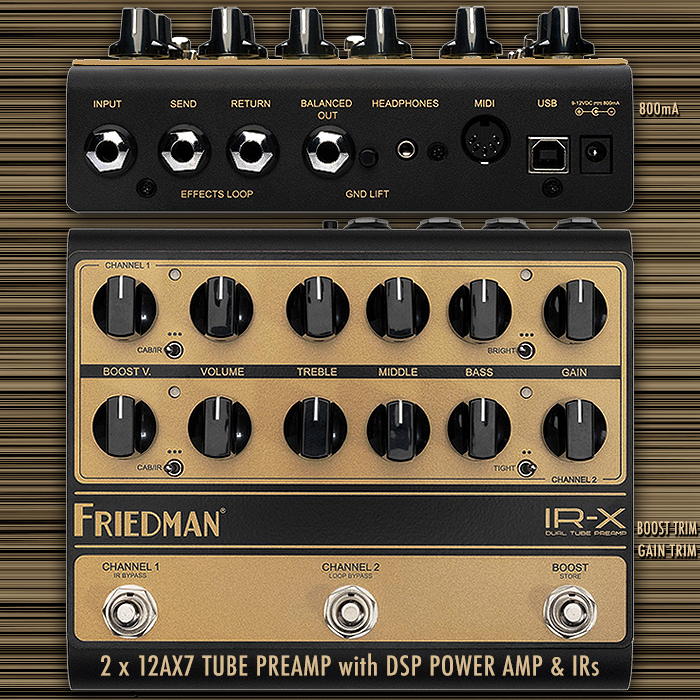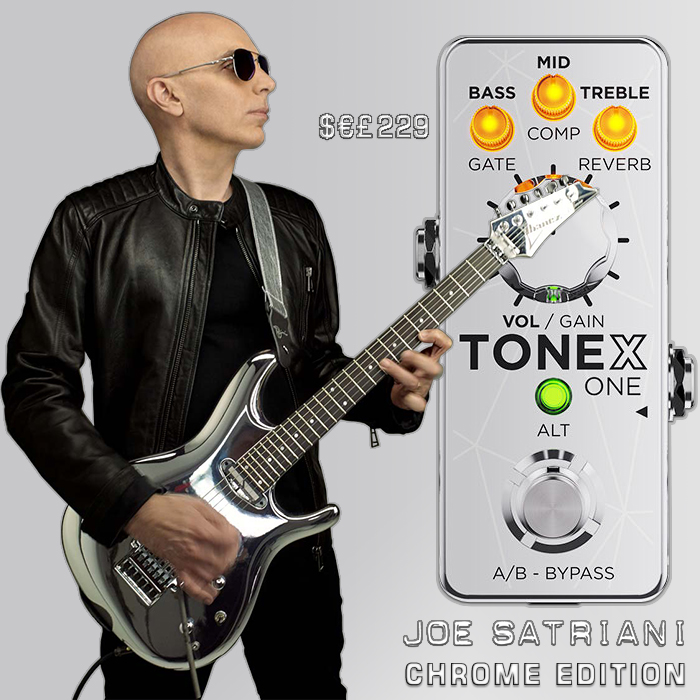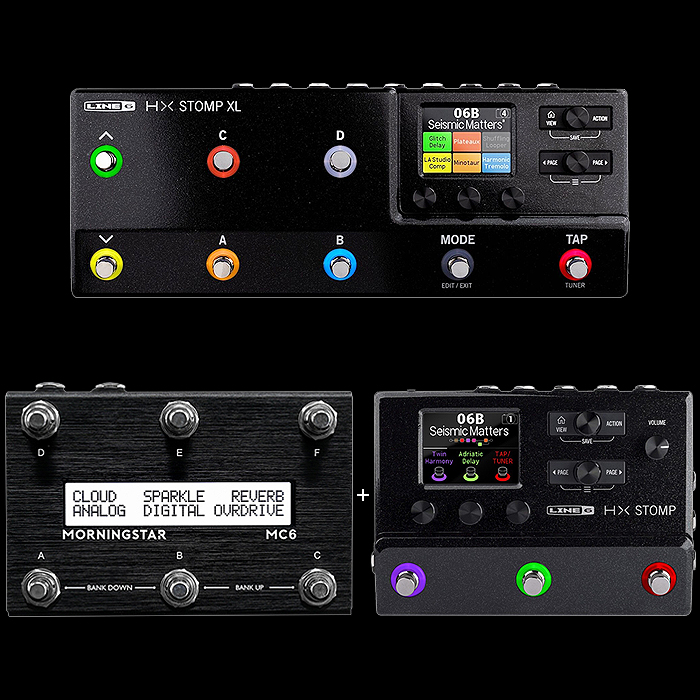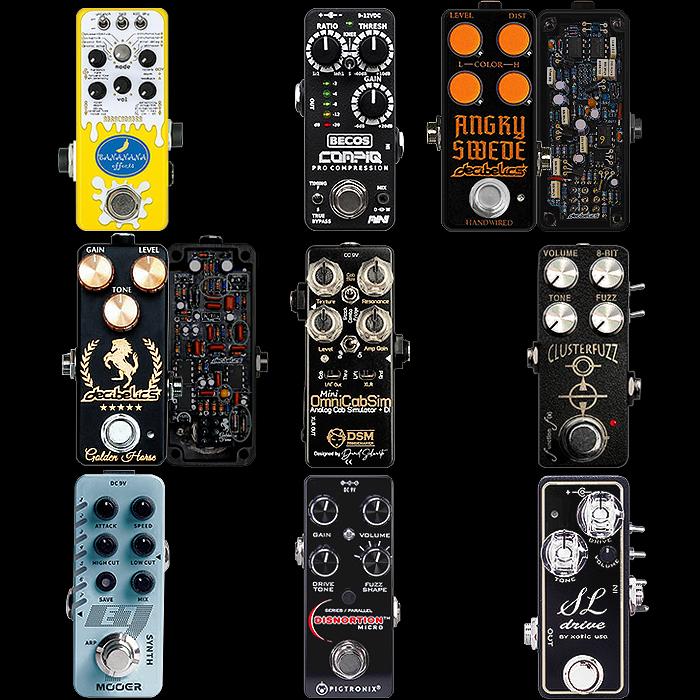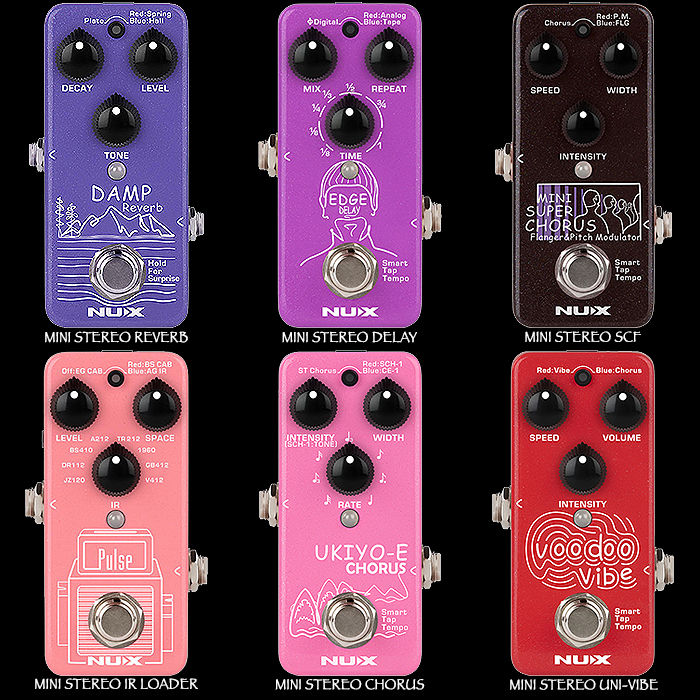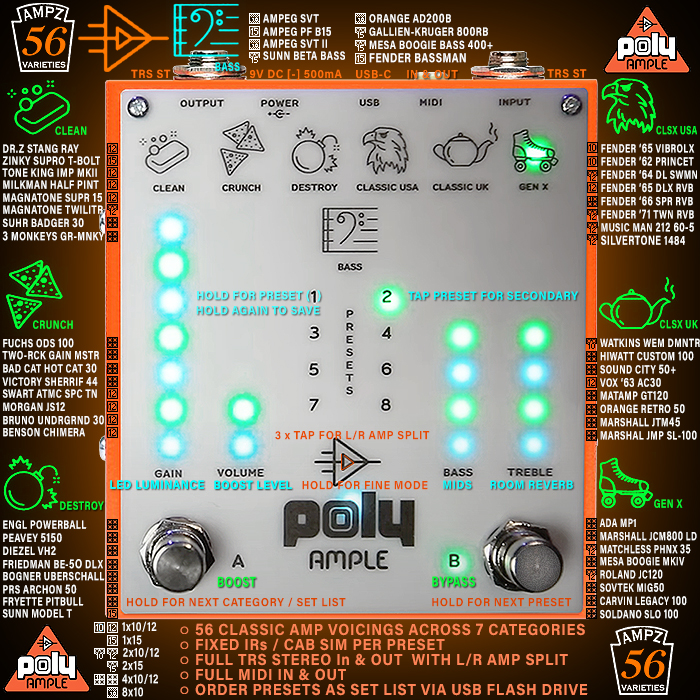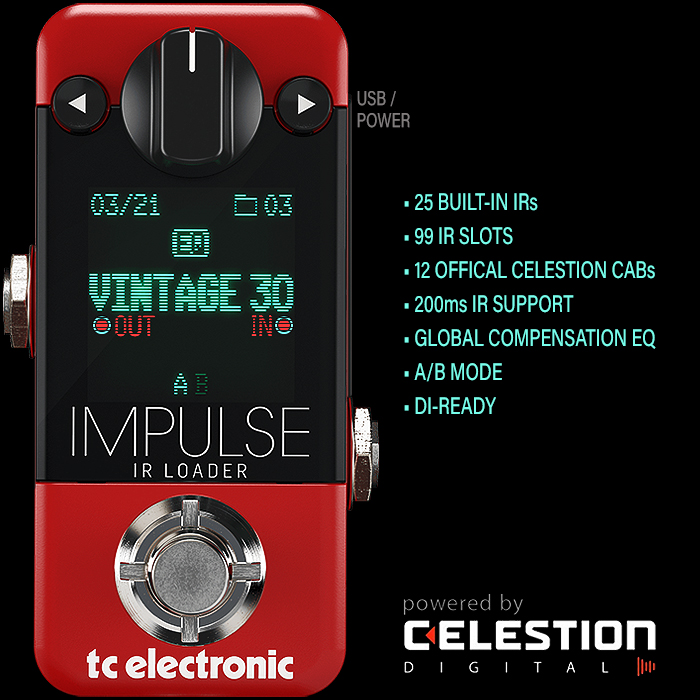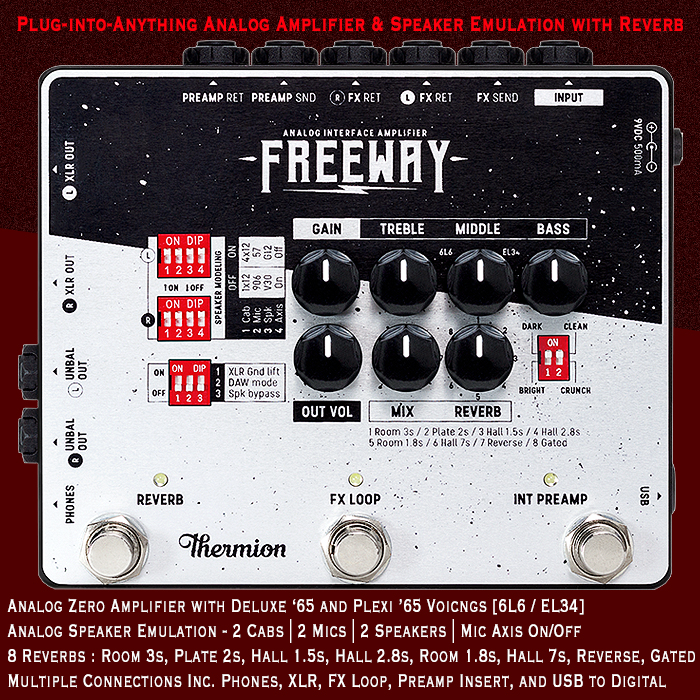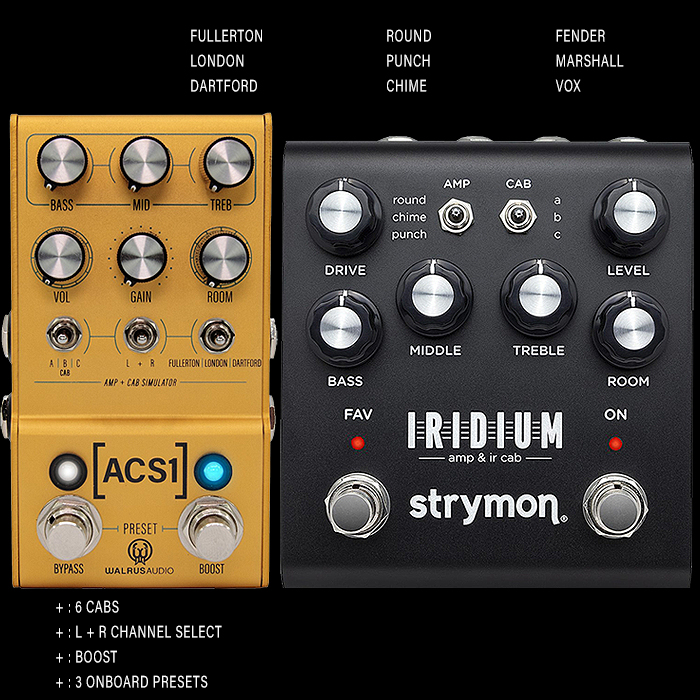The Battle for the Amp Capture / Profiler Middle-Ground heats up - Neural DSP Nano Cortex vs AmpliTube Tonex

When I first saw a teaser for the Neural DSP Nano Cortex I thought it was an interesting idea - but one that I wouldn’t necessarily get along with. For instance - because the Source Audio compacts offload a lot of the pedal control to the Neuro App - that has entirely managed to put me off those devices - I love the larger One Series pedals - Ventris, Nemesis, Collider and recent Artifakt - which you can entirely run off the surface controls - but I’ve never really gotten on with any of the other more compact editions of that line.
I’ve frequently stated that FX Pedal interface design is still lagging around 10 years behind that of modern consumer electronics devices - like say the iPhone. The Quad Cortex did a lot to claw back some of that distance - with a pretty smart screen interface also served by those incredible rotary actuating footswitches. As interfaces and user experiences go - that model was the new benchmark and genuine game-changer for pedal builders to aim for.
Watching the recent YouTube videos on the Nano Cortex - I can’t help but think that the Mobile App Interface isn’t quite of the quality I would like it to be. Boss also could do with significantly updating the aesthetics of its own App interfaces - where Fender has weirdly become one of the benchmarks for pretty and relatively intuitive interfaces - copying a lot of the work done by established plugin brands IK Multimedia / AmpliTube and Positive Grid.
But a big reason for me mostly still sticking to analog pedals - or analog-control pedals - is their immediacy (you never need talk about a hint of lag even!) - and they all automatically give you the ability to instantly know where you’re at, and being instantly able to make all the changes you need to on the one control surface!
If you acquire the Nano Cortex you will need to use another screen as the device comes without one - and I’m not sure people would want their mobile phone interfering with their playback experience - particularly during any kind of live playback or recording session - so you would most likely need to buy an iPad or similar ’portable screen’ to control the pedal.
The cheapest iPad you can get nowadays is around $200 - and you then kind of loose out on the advantage of the slightly smaller form factor - and it of course bumps up the price to $749.
The Nano Cortex tries to make up for it in several clever ways - including those onboard LED knob circular light-up strips - which indicate the Preset positions of those knobs. While for me - a lot of the necessary visual cues are missing - and a lot of what made the Quad Cortex so exciting is missing from this smaller device. Which is not actually a Modeller like it’s bigger brother / forebear - but rather just a Capture / Profiler device with a smart Bluetooth accessible library of several thousand user presets.
You get 5 tone blocks on the device - with some additional secondary effects (singular Chorus, Delay and Reverb) - but there is no ’Modelling’ as such going on, and the feature set is massively stripped down from the $1,699 Quad Cortex - but then again you’re only paying $549 (or $749 with a ’screen’) for the Nano Cortex experience - also you would typically require a few further outboard devices to complete the chain as such!
The most obvious competitor here is the slightly larger AmpliTube Tonex which is even less money at $399, somewhat larger than the Nano Cortex (above / below image is in proportion!) - but it has its own screen, and a slightly larger feature set - with a different set of smarts to the Nano.
I thought it might be interesting to do a kind of top level comparison to help rationalise the acquisition of either or neither device!

Neural DSP Nano Cortex Digital Amp, Cab and FX Processor - $549
Controls - Gain, Exit, Capture, Save, Level, Bank : 1-5, Bass, Mid, Treble, Amount - FX, FX Blocks : 1-5, Capture Slots : 1-5, IR Loader Slots : 1-5, Rotary Footswitches I & II allow you to scroll though Presets, FX Blocks and Bypass Modes.
Rear + Right Side Ports - Boost : Off/On, XLR Capture Input, Input, Output 1L, Output 2R / Capture Out, GND : Lift/On, EXP/MIDI, Headphones Port & Volume, USB-C, 9-12V DC [-] 600ma.
Key Features :
- Complete guitar or bass rig in an ultra-compact pedal
- Neural Capture technology with the same resolution and quality as on the Quad Cortex
- Create incredibly accurate digital replicas of any amp, cab, or drive pedal on-device in just a few minutes
- 2GHz of DSP courtesy of SHARC architecture delivers the industry-leading sonic authenticity of the full-size Quad Cortex
- Saves up 256 Neural Captures, 256 IRs, and 64 full-fledged presets
- Free access to thousands of Neural Captures in the Cortex Cloud
- Fits in the palm of your hand and weighs just 620g
- Comprehensive signal chain with Pre and Post FX
- Pre FX include : Adaptive Noise Gate and Transpose Down/Up Instrument Tunings
- Post FX include : Chorus (≈ Boss DC-2W), Analog BBD Style Echo, and Mind Hall Reverb (≈ Lexicon 224)
- Impulse Response loader
- Customizable footswitch functions
- Gapless Preset switching
- Fully-fledged low-latency audio interface with 24-bit, 48kHz recording
- Use it as a standalone unit or integrate it with your existing setup
- Ideal for playing live, studio recording, or home practice
- Intuitive, easy to use, and beginner-friendly
- Wirelessly download Captures, control parameters, and manage your presets over Bluetooth with the Cortex Cloud app
- MIDI TRS in + full MIDI control via USB
- Built-in tuner
- Dimensions : 144 x 103 x 62 mm / 5.6 x 4.0 x 2.4"
- Weight : 620 g / 1.36 lbs
- MAP : $549
AmpliTube Tonex AI-Infused Profiler / Modeller and FX Processor - $399
Tonex 4
Controls - Mode / Select, Press / Back, Parameter / Hold>Alt, Gain / Reverb, Bass / Compression, Mid / Noise Gate, Treble / Presence, Volume / Depth, A, B, C Footswitches - A+B is Bank Down, B+C Is Bank Up.
Rear Ports - Input, L Out (Mono), R Out, Headphone, MIDI 5-Pin In / Out, EXT Control, USB Micro-B, 9V DC [-] 320mA.
Key Features :
- AIMMTM DSP technology. Artificial Intelligence Machine Modeling proprietary technology capable of recreating the essence of amplifiers and distortion pedals, or everything together
- Up to 50 banks with 3 PRESET slots each for up to 150 customizable PRESETs. Up to 300 storable TONE MODELs
- Full MIDI implementation for more complex setups
- Ultra-low noise, 24-bit/192k Hz converters for class-leading sound quality
- 5 Hz–24 kHz frequency response to capture the full scope of your guitar’s sound
- Up to 123 dB dynamic range provides whisper-quiet operation at any gain setting
- Expression pedal input to control any parameter and create multi-parameter macros
- Sculpt your PRESETs with additional DSP processors such as noise gate, compressor, tone EQ and reverb
- Fast and straight-forward interface with 5 quick accessible knobs plus advanced parameters
- Stage-ready, high-visibility display, shows the PRESET name, bank number, or parameter’s name and value
- The state-of-the-art DSP is enclosed in a sturdy anodized aluminum chassis designed and crafted in Italy
- Suitable for both guitar and bass
- Headphones output lets you practice in silence with your favorite tone
- Size: 176 mm/6.92′′ (W) x 142 mm/5.59′′ (D) x 55 mm/2.16′′ (H)
- Weight: 906 grams
- Model any rig you want using the companion software TONEX for Mac/PC, capable of capturing the behavior of distortion/overdrive/fuzz/boost/EQ pedals, amps and cabs or everything together as a TONE MODEL to play in your TONEX Pedal
- TONEX Plug-in virtual pedal and amp for AmpliTube included to play your TONE MODELs easily in AmpliTube
- Swap the cab in the captured TONE MODEL rig with any third-party IR you want or use the advanced included VIR technology module which features a double customizable microphone placement
- TONEX for Mac/PC included. It works as a player, librarian and PRESET editor to create, organize and swap PRESETs between TONEX Pedal and the computer
- Built-in USB port to use TONEX Pedal as an audio interface for recording or for PRESET management
- AmpliTube 5 included
- TONEX for Mac/PC included
- Tone.net sharing platform for exploring and exchanging PRESETs and TONE MODELs
- MAP : $399
Final Thoughts

In truth I'm not really the target market for either of these devices - where I might dip my toes into the Mini Tonex One at some stage just to test that format, but I've no interest in Amp or Pedal Capture / Profiling or Modelling of that nature really. I'm a Clean Pedal Platform Guy - who likes pushing air as such in the more conventional pedals and amps manner. I think if you're a recording specialist / producer / home studio guy - then this approach makes perfect sense to combine with your outboard gear, audio interfaces and DAW's and the like. It makes the most sense for touring musicians really - who can take accurate 'audio profile snapshots' of their key devices and have them all onboard one handy device for the whole tour!
Neither of those devices are proper all-in-one stand alone devices - say like the Quad Cortex, Axe FX, or Helix. If I was getting into that side of things I would most likely go full fat and big into the Quad Cortex - while that device is still maturing on the auxiliary effects side - Modulations, Time-Based effects and other quirky stuff that you find on devices like the Eventide H90.
There will eventually be a single fully-fledged and full-fat device that does everything brilliantly - and considering how much money Fender is pouring into its $1,500 Tone Master - they could well get there first - while in certain areas they still have a little catching up to do to match the Quad Cortex.
When I first saw the Quad Cortex with its rotary-encoder Foootswitches and slick format and interface - with smart features like the Bluetooth library connectivity - and the ease of sharing patches between friends. You should really just be able to zap a preset to your friend - and they can the zap it direct to their device. Versus uploading and downloading from libraries - although that is of course an essential too.
I guess both the Nano Cortex and Tonex are intended for musicians who already have bits of the signal chain - additional pedals and interfaces needed to get the most out of that platform - as well as a reason to profile all their different pedals and amps. As I said it makes most sense for a touring musician - and say a music educator I suppose. For my purposes I would still much rather pull out a specific pedal from the many drawers I store them in.
We're already well into the 'rental economy' where we increasing don't own anything of material value. Download libraries can vanish overnight - and it doesn't matter if you bought those rights at one stage - those files might still disappear from those cloud servers - for a variety of reasons.
It's interesting that both of these devices do vaguely similar things - and each has its own innovations. While it would seem that the Tonex has a little broader features set, including 150 onboard Presets versus the 64 of the Nano Cortex.
If you know the story of the Teenage Engineering OP-1 - you will know that its pricing jumped up enormously on a couple of occasions - mostly due to increased costs and limited supply for its super high-resolution AMOLED screen. I bought a very early edition for $799 equivalent, where the price then jumped to $1,399 - where there was a two year hiatus as Teenage Engineering searched for a replacement screen. They then cancelled the product, re-engineered it as the OP-1 Field - and launched that at the even higher price of $1,999.
So it's understandable that Neural DSP might want to offload the screen to make the cost of their device more manageable. But in truth it's a work-around really, and the App definitely requires a little finessing. There are lots of blogs and channels calling the Nano Cortex a Game-changer - while it's not really in the same category as its properly pioneering sibling, or the original Tonex or shrunken Tonex One.
For sure it's a smart device, and does several things cleverly - but a Mini Quad Cortex it's not - it's almost, but not quite like the difference between an early-ish iPhone and iPod!
I feel there are audiences for both the featured devices - but I don't feel that that the Nano will necessarily fully manage to scratch that Qiad Cortex itch. I think if you want a screen - you will go for the Tonex or save up for a Quad Cortex. If you're happy to do most things via the App - then the Nano Cortex is a fine choice in itself. On balance neither device is for me - the Quad Cortex would still be top of my list if I were into these kinds of devices. I was hoping that we would get a Mini Quad Cortex - but the Nano is its own thing really and a much distilled version of that. It's not a case of winners here really for the Nano Cortex vs the Tonex - but more a matter of preferences.
The Nano is cool, but not quite as cool as I would want it to be! I still live in hope of a proper Mini Quad Cortex some day!

